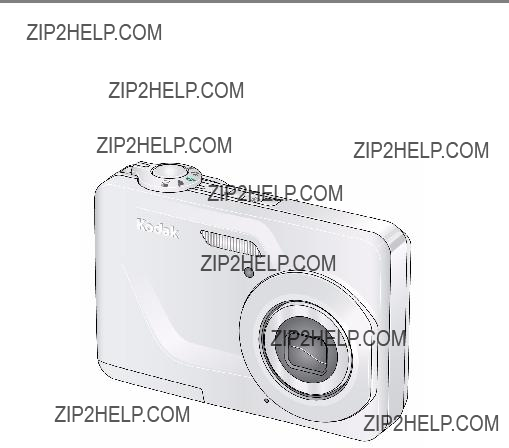
KODAK EASYSHARE C160/C180
Digital Camera
Extended user guide
For interactive tutorials:
For help with your camera:

KODAK EASYSHARE C160/C180
Digital Camera
Extended user guide
For interactive tutorials:
For help with your camera:
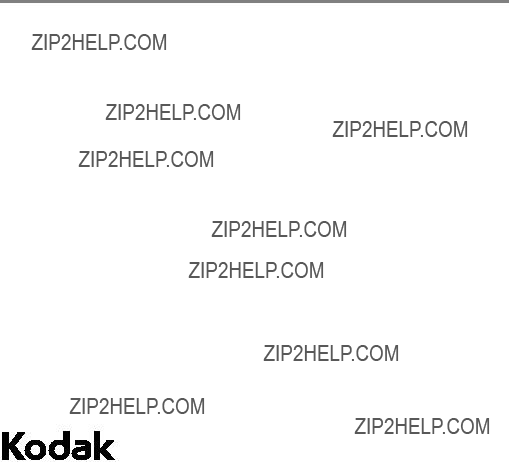
Eastman Kodak Company
Rochester, New York 14650
?? Eastman Kodak Company, 2008
All screen images are simulated.
Kodak, EasyShare, Max, and Perfect Touch are trademarks of Eastman Kodak Company.
4H5115_en
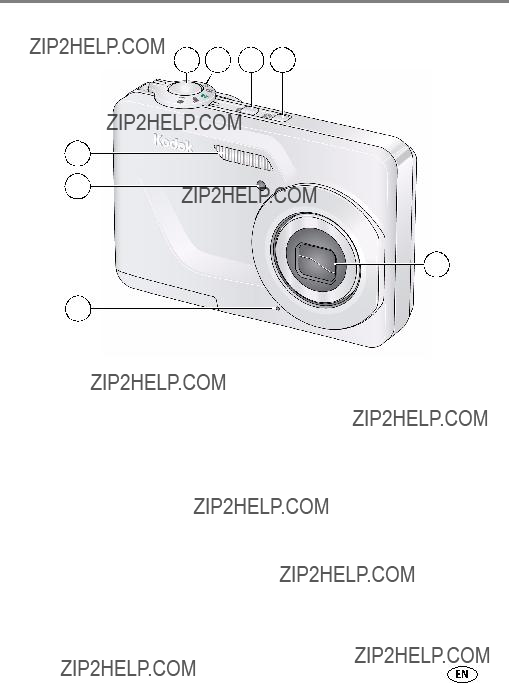
Product features
Front view
1 2 3 4
8
7
5
6
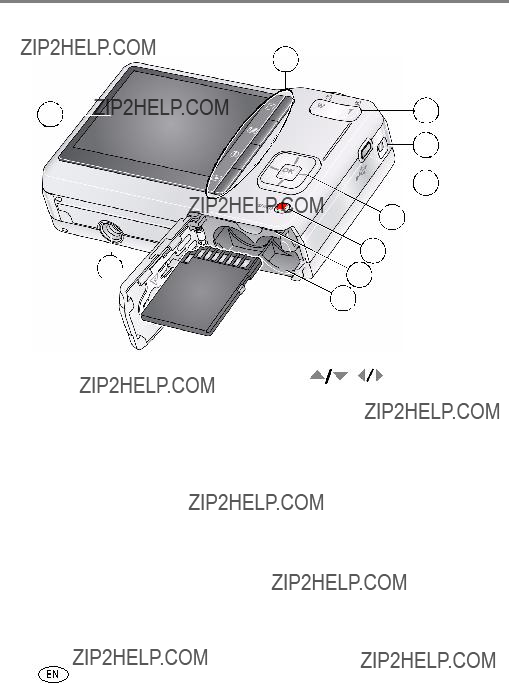
Product features
Back view
2
4
 5
5
 6
6
 7
7

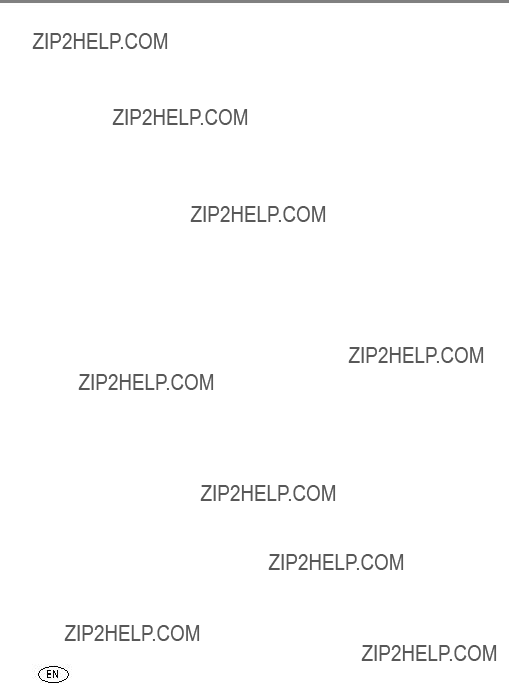
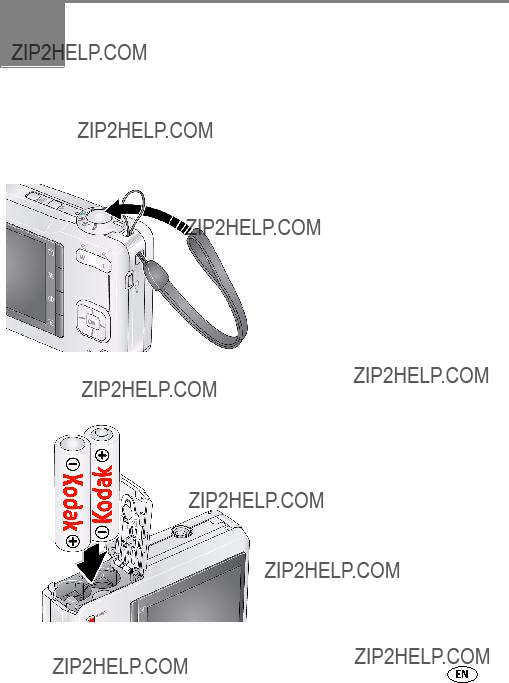
1 Setting up your camera
IMPORTANT: For package contents, see your product package.
Attaching the strap
Loading the AA batteries
For information on replacing the batteries and extending battery life, see page 47.
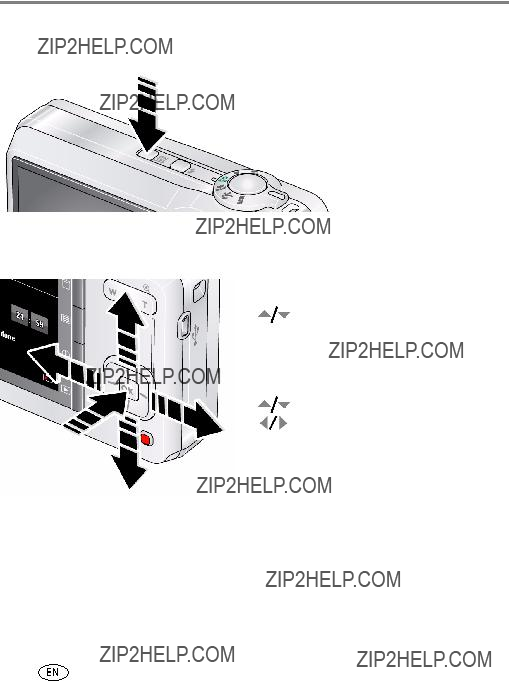
Setting up your camera
Turning on the camera
Press the Power button.
Setting the language and date/time
Language:
NOTE: To change language or date/time in the future, use the Setup menu (see page 26).
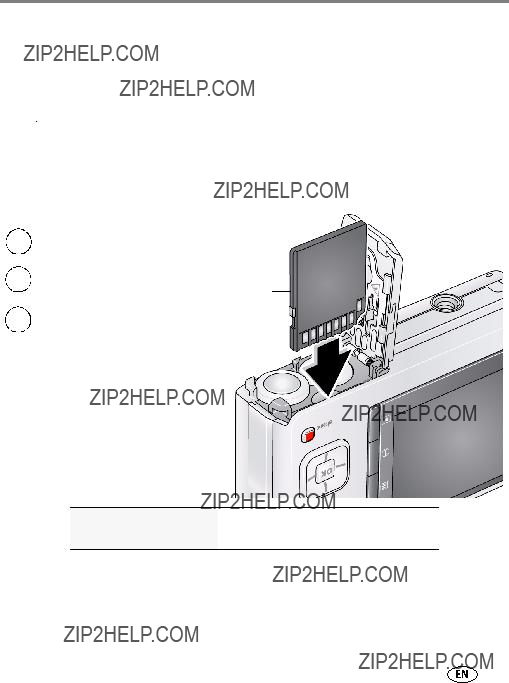
Setting up your camera
Storing pictures on an SD or SDHC Card
Your camera has internal memory. You can purchase an SD or SDHC Card to conveniently store more pictures/videos. (Maximum supported card size is 32 GB.)
 CAUTION:
CAUTION:
A card can only be inserted one way; forcing it may cause damage. Inserting or removing a card while the camera is on may damage the pictures, the card, or the camera.
1 Turn off the camera.
Purchase accessories www.kodak.com/go/c160accessories
www.kodak.com/go/c180accessories
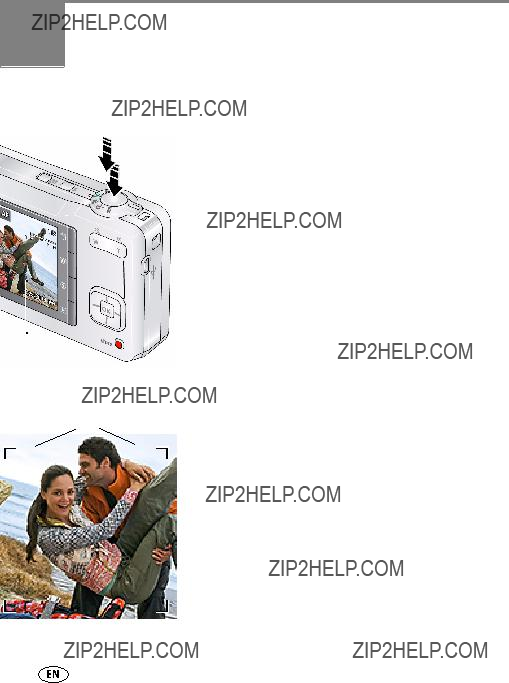
2 Taking pictures/videos
Taking pictures
To get clear, focused pictures:
1Turn the Mode dial to Auto  . Then press the Power button to turn on the camera.
. Then press the Power button to turn on the camera.
2 Compose the picture.
3Press the Shutter button halfway to focus and set exposure. When the framing marks turn green, press the Shutter button completely down. (For more about framing marks, page 4.)
Framing marks
Using the framing marks
Framing marks
Framing marks indicate the camera focus area.
1Press the Shutter button halfway.
If the camera is not focusing on the desired subject, release the Shutter button and recompose the scene.
2Press the Shutter button completely down to take the picture.
NOTE: Framing marks do not appear in all modes. Multiple framing marks may appear when faces are detected. When you press the Shutter button halfway down, the framing marks attempt to follow the main subject.
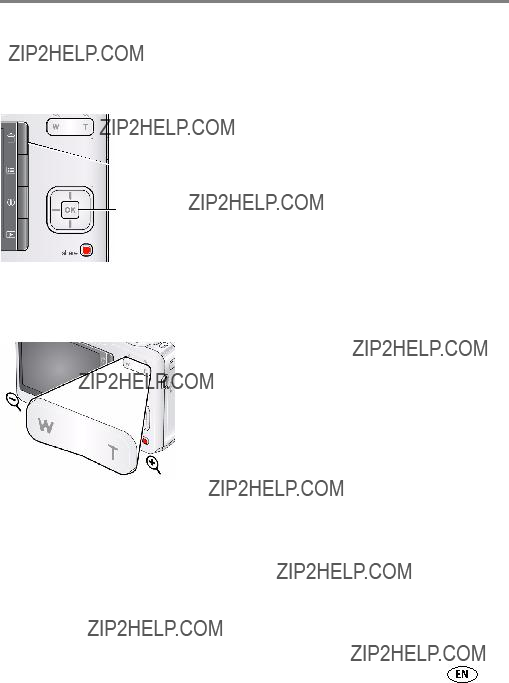
Taking pictures/videos
Reviewing the picture/video just taken
After you take a picture/video, the LCD displays a quickview for approximately 5 seconds. (To exit the quickview sooner, press the Shutter button halfway.)
Delete the current picture/video
OK Play/pause a video
To review pictures/videos anytime, see page 12.
Using the optical and digital zoom
1 Use the LCD to frame your subject.
2 To zoom in, press Telephoto (T).
To zoom out, press Wide Angle (W).
3 Take the picture or video.
NOTE: For focus distances, see Camera Specifications starting on page 43.
Using digital zoom
Use digital zoom to get up to 5X magnification beyond optical zoom. Press Telephoto
(T) until the slider is at the end of the optical zoom range. Release Telephoto (T), then press it again.
NOTE: You may notice decreased image quality when using digital zoom. The slider pauses and turns red when the picture quality reaches the limit for an acceptable 4 x
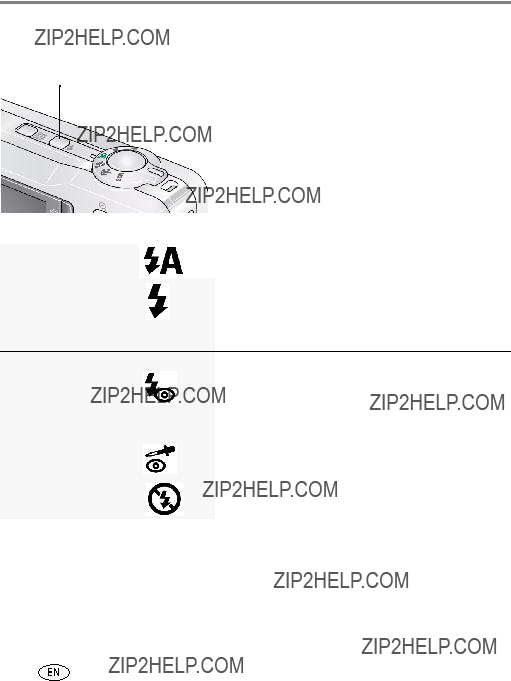
Taking pictures/videos
Using the flash
Press the flash button repeatedly to scroll through flash modes.
The current flash mode is shown on the LCD.
Red Eye
Your camera can correct
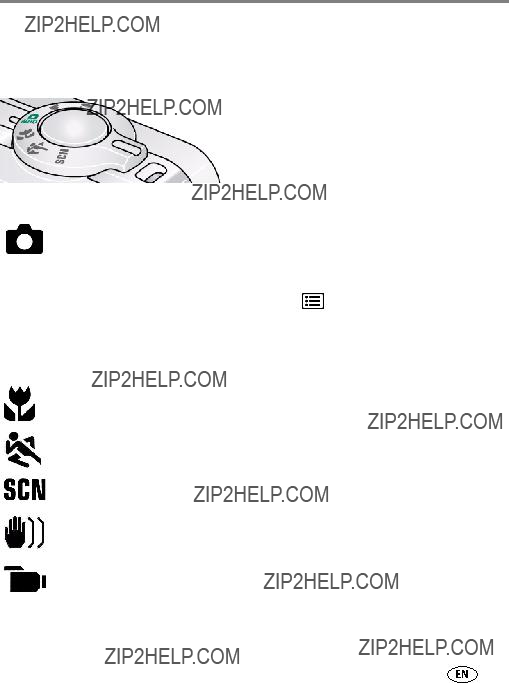
Taking pictures/videos
Using different modes
Turn the Mode dial to the mode that best suits your subjects and surroundings.
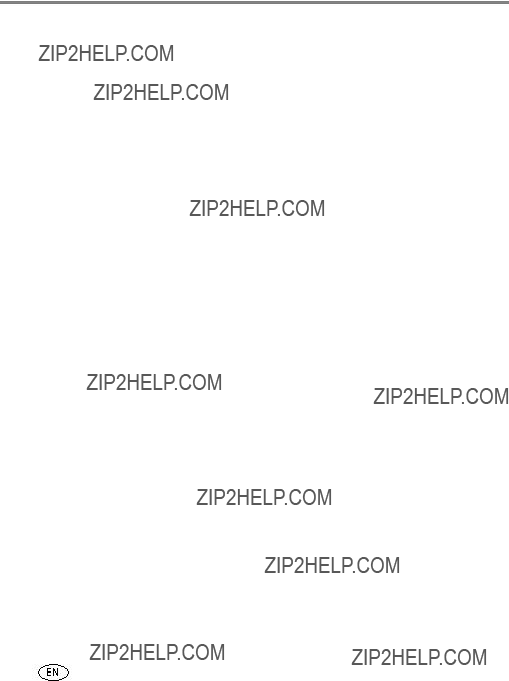
Taking pictures/videos
Using Scene (SCN) modes
Choose a Scene
1 Turn the Mode dial to SCN.
2Press 
 to view scene mode descriptions.
to view scene mode descriptions.
If the mode description turns off before you finish reading it, press OK.
3 Press OK to choose a Scene mode.
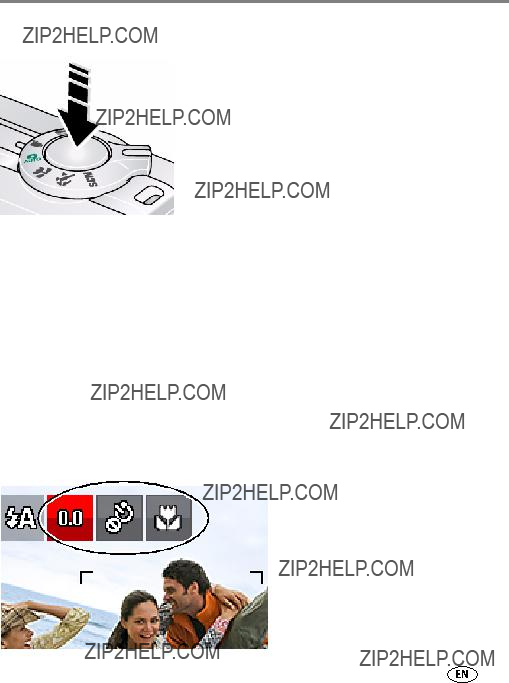
Taking pictures/videos
Taking a video
1 Turn the Mode dial to Video  .
.
2Press the Shutter button completely down, then release it. To stop recording, press and release the Shutter button again.
To review and work with videos, see page 12.
NOTE: Sound cannot be played on the camera. Sound is heard after the video is transferred to your computer.
Using shortcuts
Your camera has a clean, uncluttered interface. For quick access to the most popular functions:
1Press the Info  button.
button.
The shortcuts appear.
2Press to access functions like Exposure Compensation,
to access functions like Exposure Compensation,
3Press  to choose a setting.
to choose a setting.
To hide the shortcuts again, press  .
.

 Shortcuts
Shortcuts
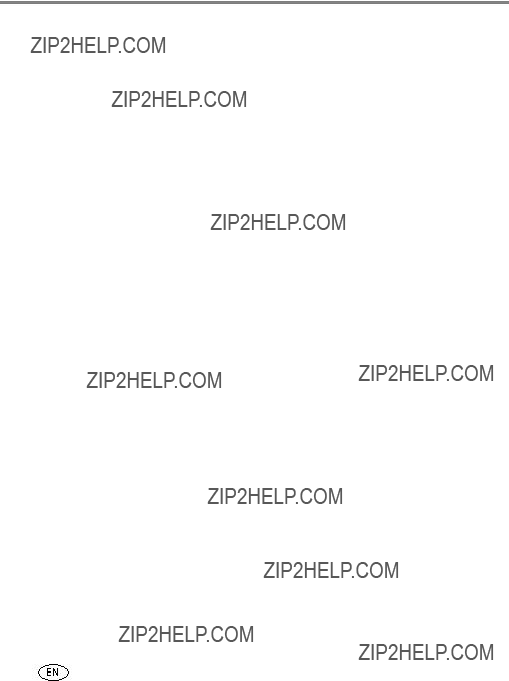
Taking pictures/videos
Using the
Use the
1 In any  button to turn on the shortcut icons.
button to turn on the shortcut icons.
2Press  to highlight the
to highlight the  icon. Press
icon. Press  to choose a setting:
to choose a setting:
10
2
2
3Compose the scene. Press the Shutter button halfway, then completely down.
The camera takes the picture/pictures after the delay.
Use the same procedure to take a 2- or
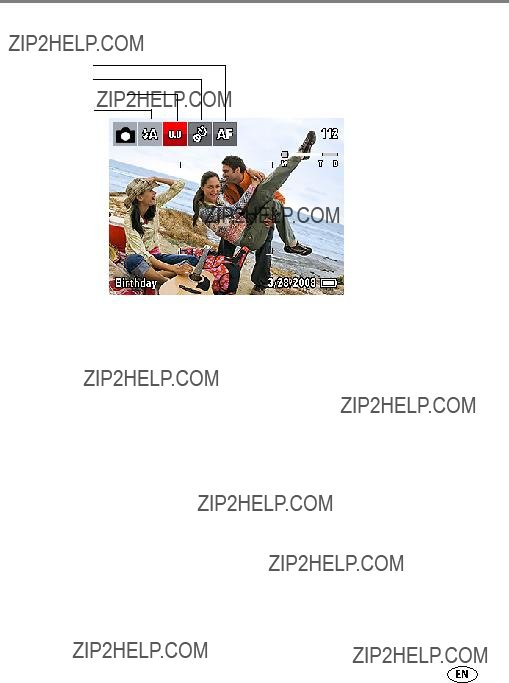
Taking pictures/videos
Understanding the
Focus mode*
Self timer*
Exposure compensation*
Flash mode
* To learn more about shortcuts, see page 9.
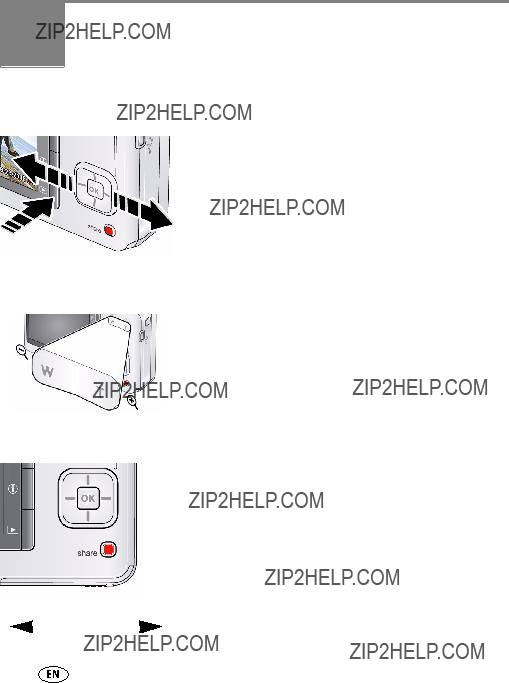
3 Working with pictures/videos
Reviewing pictures/videos
1 Press the Review  button.
button.
2Press  for previous/next picture/video.
for previous/next picture/video.
???Press the Shutter button halfway down to return to Capture mode.
???To view pictures/videos as thumbnails, see page 14.
Magnifying a picture
1 Press T to magnify
2Press 
 to view other parts of a picture.
to view other parts of a picture.
??? Press OK to return to 1X.
Playing a video
Press OK to play a video. Press OK to pause/resume. During playback:
???Press  to play at 2X speed; press again for 4X.
to play at 2X speed; press again for 4X.
???Press  to reverse at 2X speed; press again for 4X.
to reverse at 2X speed; press again for 4X.
NOTE: Sound cannot be played on the camera. Sound is heard after the video is transferred to your computer.
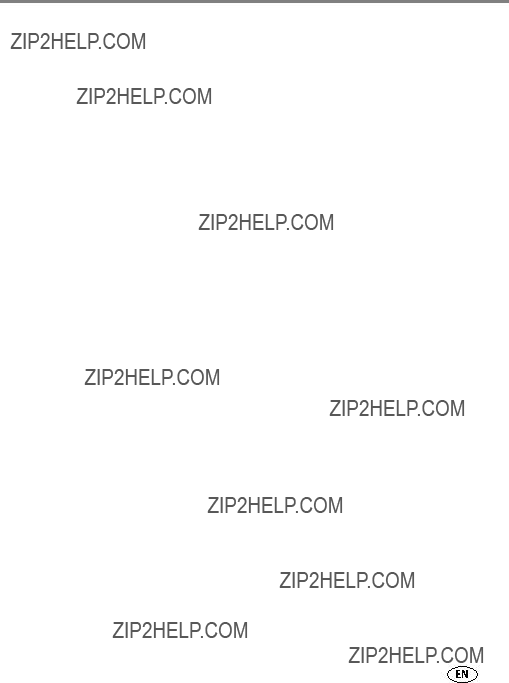
Working with pictures/videos
Deleting pictures/videos
1 Press the Review  button.
button.
2 Press  for previous/next picture/video.
for previous/next picture/video.
3 Press the Delete  button.
button.
4 Follow the screen prompts.
NOTE: To delete protected pictures/videos, remove protection before deleting. (See Protecting pictures/videos from deletion.)
Using the undo delete feature
If you accidentally delete a picture, you may be able to use Undo Delete to retrieve it. This feature is only available immediately after you delete a picture.
Protecting pictures/videos from deletion
1 Press the Review  button.
button.
2 Press  for previous/next picture/video.
for previous/next picture/video.
3 Press the Menu  button.
button.
4Press  to highlight Protect, then press OK.
to highlight Protect, then press OK.
The picture/video is protected and cannot be deleted. The Protect icon  appears with the protected picture/video.
appears with the protected picture/video.
???Press the Shutter button halfway down to return to Capture mode.
IMPORTANT: Your camera offers a
NOTE: Formatting internal memory or an SD or SDHC Card deletes all (including protected) pictures/videos. (Formatting internal memory also deletes email addresses and tag names. To restore them, see EASYSHARE Software Help.)
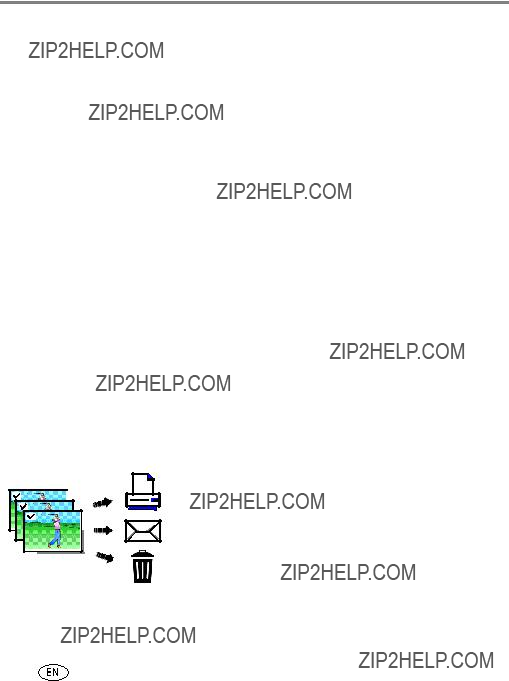
Working with pictures/videos
Viewing pictures/videos in different ways
Viewing as thumbnails
1Press the Review  button.
button.
The camera shows the last picture that was taken.
2Press the Wide Angle (W) button to view pictures/videos as thumbnails. (Press it again to see more, smaller thumbnails.)
To view all pictures/videos, highlight the All tab.
To sort by favorites, date, or tagged pictures/videos, press  and highlight the appropriate tab.
and highlight the appropriate tab.
3To see a single picture/video, press  to highlight it. Then press the Telephoto
to highlight it. Then press the Telephoto
(T) button.
???To select multiple pictures/videos, see Selecting multiple pictures/videos, page 14.
???Press the Shutter button halfway down to return to Capture mode.
Selecting multiple pictures/videos
Use the
Selected pictures
1Press the Review  button, then
button, then  and
and
 to find a picture/video.
to find a picture/video.
2Press OK to select pictures/videos.
A check mark appears on the picture. You can now print, transfer, delete, etc. the selected pictures. You can press OK a second time to remove a check mark.
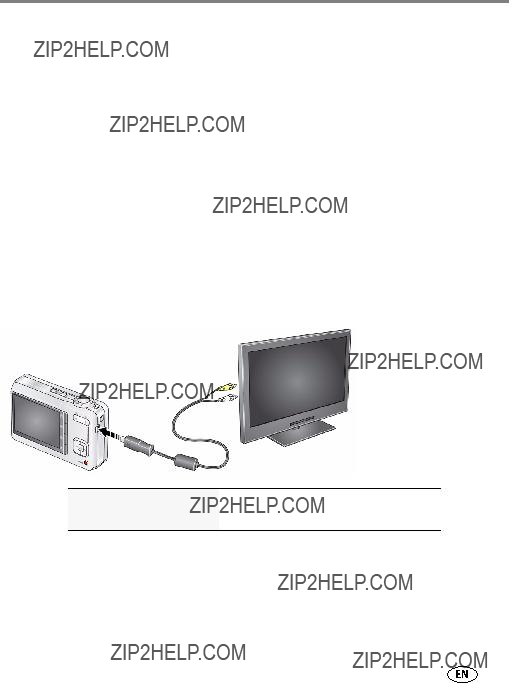
Working with pictures/videos
Running a slide show
Use Slide Show to display your pictures/videos on the LCD.
1 Press the Review  button, then press the Menu
button, then press the Menu  button.
button.
2 Press  to highlight Slide Show, then press OK.
to highlight Slide Show, then press OK.
3 Press  to highlight Begin Show, then press OK.
to highlight Begin Show, then press OK.
Each picture/video is displayed once. To interrupt the Slide Show, press OK. IMPORTANT: Your camera offers a
Displaying pictures/videos on a television
You can display pictures/videos on a television, computer monitor, or any device equipped with a video input. To connect the camera directly to a television, use an A/V cable (may be sold separately).
Purchase accessories www.kodak.com/go/c180accessories
www.kodak.com/go/c160accessories
NOTE: Ensure that the Video Out setting (NTSC or PAL) is correct (see page 27). The slide show stops if you connect or disconnect the cable while the slide show is running. (Image quality on a television screen may not be as good as on a computer monitor or when printed.)
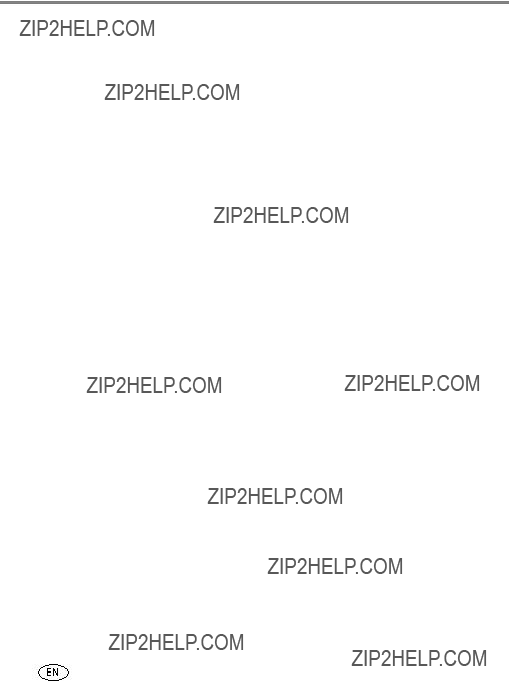
Working with pictures/videos
Using the menu button in review
1 Press the Review  button, then the Menu
button, then the Menu  button.
button.
2Press  to highlight a tab:
to highlight a tab:
???Review to view and share pictures/videos
???Edit to edit pictures/videos
???Setup to control how your camera operates
3 Press  to highlight a setting, then press OK.
to highlight a setting, then press OK.
4 Highlight an option, then press OK.
IMPORTANT: Your camera offers a

Working with pictures/videos
Cropping pictures
You can crop a picture so that only the desired portion of the picture remains.
4Follow the screen prompts.
The picture is cropped. (The original is saved.) Cropped pictures cannot be cropped again on the camera.
??? Press the Shutter button halfway down to return to Capture mode.
IMPORTANT: Your camera offers a
Using KODAK PERFECT TOUCH Technology
KODAK PERFECT TOUCH Technology helps ensure better, brighter pictures.
1 Press the Review  button, then
button, then  for previous/next picture.
for previous/next picture.
2Press the Menu  button, then
button, then  to highlight the Edit tab. Highlight PERFECT TOUCH Tech, then press OK.
to highlight the Edit tab. Highlight PERFECT TOUCH Tech, then press OK.
The enhancement is previewed. Press  to view other parts of the picture.
to view other parts of the picture.
3Press OK. Follow the screen prompts to replace the original picture or to save the enhanced picture as a new one.
??? Press the Shutter button halfway down to return to Capture mode.
NOTE: You cannot apply PERFECT TOUCH Technology to videos or to pictures to which PERFECT TOUCH Technology is already applied.
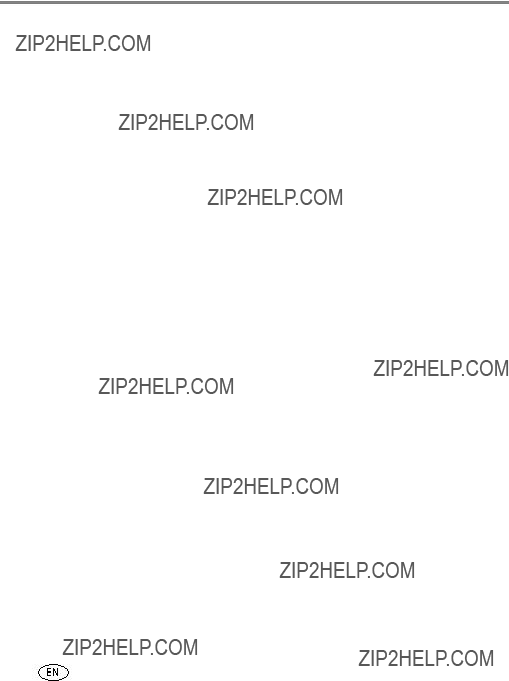
Working with pictures/videos
Rotating pictures
You can rotate a picture to portrait or landscape orientation.
1 Press the Review  button, then
button, then  to find the previous/next picture.
to find the previous/next picture.
2 Press the Menu  button. Press
button. Press  to highlight the Edit tab.
to highlight the Edit tab.
3 Press  to highlight Rotate Picture, then press OK.
to highlight Rotate Picture, then press OK.
4Press to highlight an option:
???Rotate
???Rotate
5Press OK. Follow the screen prompts to replace the original picture or to save the rotated picture as a new one.
??? Press the Shutter button halfway down to return to Capture mode.
IMPORTANT: Your camera offers a
Copying pictures/videos
You can copy pictures/videos from a card to internal memory or from internal memory to a card.
Copy pictures/videos:
1 Press the Review  button.
button.
2 Press the Menu  button, then
button, then  to highlight the Edit tab.
to highlight the Edit tab.
3 Press  to highlight Copy, then press OK. Highlight a choice, then press OK.
to highlight Copy, then press OK. Highlight a choice, then press OK.
NOTE: Pictures/videos are copied, not moved. To remove pictures/videos from the original location after copying, delete them (see page 13).
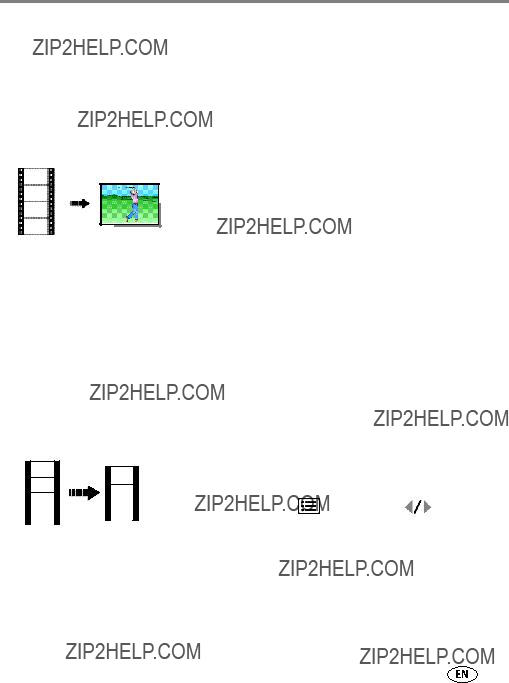
Working with pictures/videos
Editing videos
You can do incredible things with your videos!
Making a picture from a video
You can choose a single frame from a video, then make a picture suitable for a 4 x
VideoPicture
1Press the Review  button, then
button, then  to find a video.
to find a video.
2Press the Menu  button, then
button, then  to highlight the Edit tab. Highlight Make Picture, then press OK.
to highlight the Edit tab. Highlight Make Picture, then press OK.
3Follow the screen prompts.
A picture is created. (The original video is saved.)
???Press the Shutter button halfway down to return to Capture mode.
IMPORTANT: Your camera offers a
Trimming a video
You can remove an unwanted start or end from a video, saving only the desired portion.
1 Press the Review  button, then
button, then  to find a video.
to find a video.
3Follow the screen prompts.
The video is trimmed. (You can save it as a new video or replace the original.)
???Press the Shutter button halfway down to return to Capture mode.
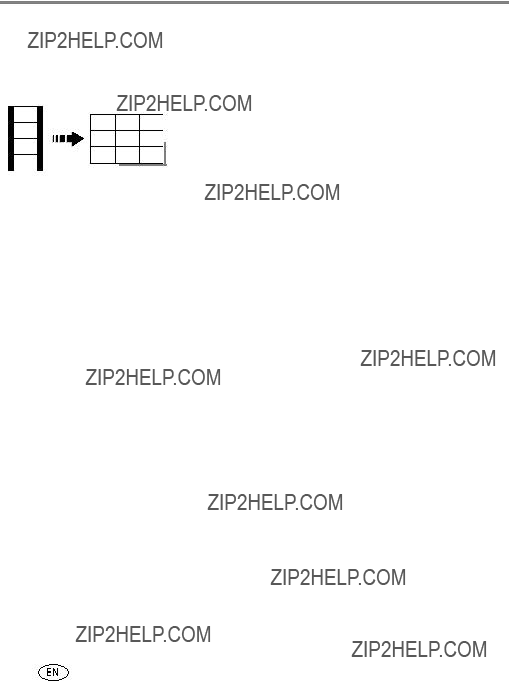
Working with pictures/videos
Making a video action print
From a video, you can make a
Video
1Press the Review  button, then
button, then  to find a video.
to find a video.
2Press the Menu  button, then
button, then to highlight the Edit tab. Highlight Action Print, then press OK.
to highlight the Edit tab. Highlight Action Print, then press OK.
3Highlight an option, then press OK.
Auto: The camera includes the first and last frames, then 2, 7, or 14 equally spaced frames.
Manual: Choose the first and last frames; the camera chooses 2, 7, or 14 spaced frames.
Full Manual: Choose 4, 9, or 16 frames.
A
??? Press the Shutter button halfway down to return to Capture mode.
IMPORTANT: Your camera offers a
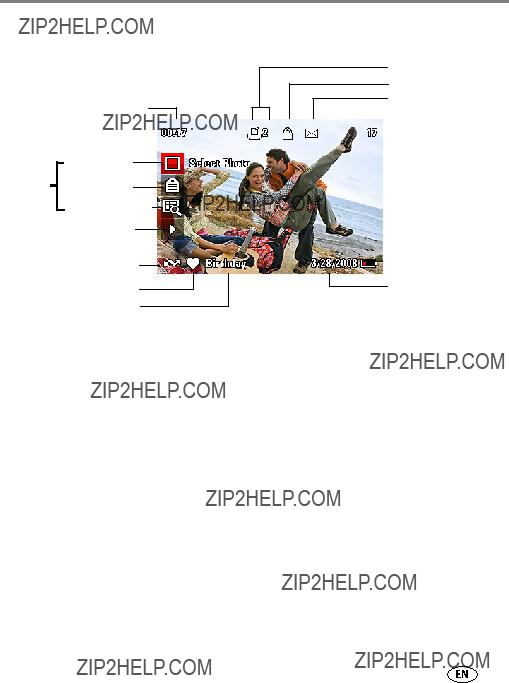
Working with pictures/videos
Understanding the review icons
Video duration
Select picture
Shortcuts Add text tag
View thumbnails
Play video
Upload tag
Favorite tag
Text tag name
www.kodak.com/go/support
Print tag/number of print Protected
Email tag
 Picture/Video number
Picture/Video number
 Battery level
Battery level
Date stamp
21
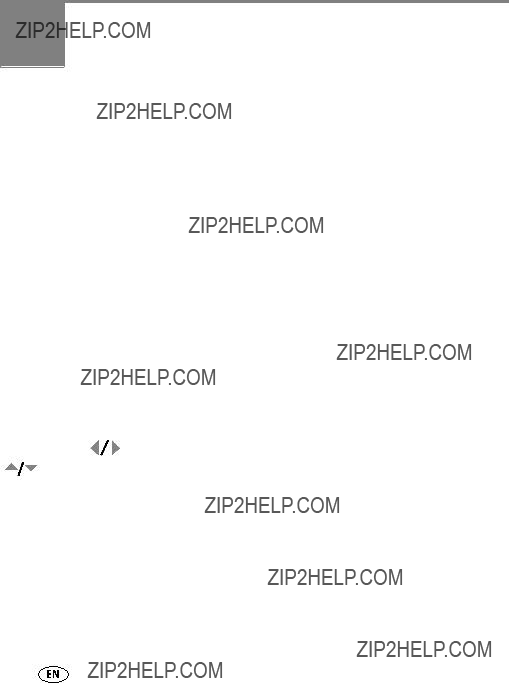
4 Doing more with your camera
IMPORTANT: Your camera offers a
Using the menu button to change settings
You can change settings to get the best results from your camera.
NOTE: Some modes offer limited settings. Some settings remain until you change them; others, until you change modes or turn off the camera.
1 Press the Menu  button.
button.
2Press  to highlight a tab:
to highlight a tab:
???Capture/Video for the most common
???Setup for other camera settings
3 Press  to highlight a setting, then press OK.
to highlight a setting, then press OK.
4 Highlight an option, then press OK. (Some options let you use  .)
.)
Using the capture tab

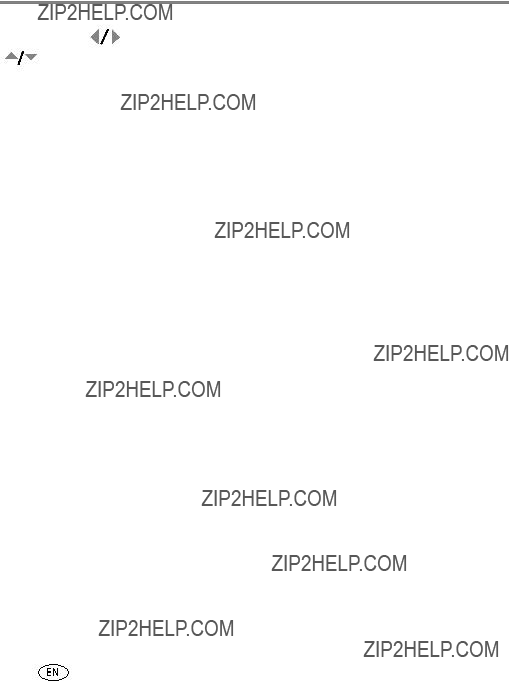
Doing more with your camera
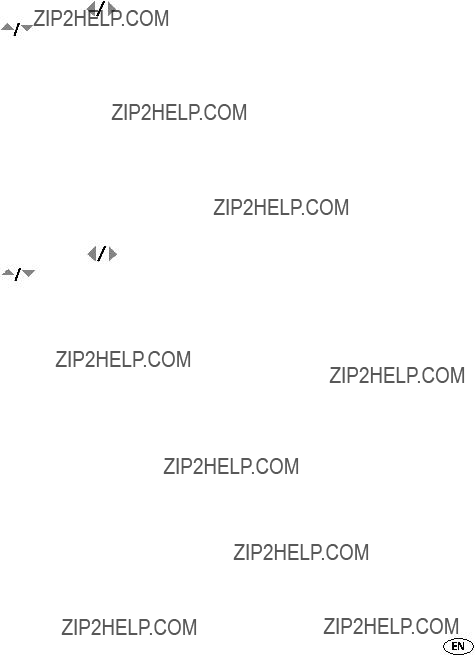
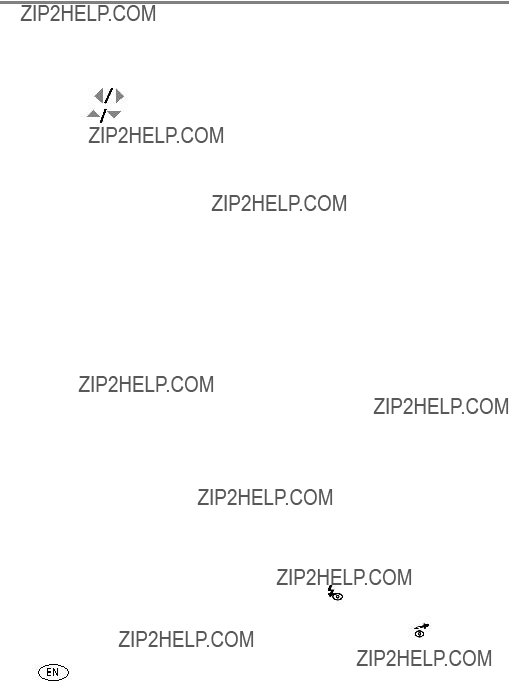
Doing more with your camera
Using the Setup menu
Use Setup to customize your camera.
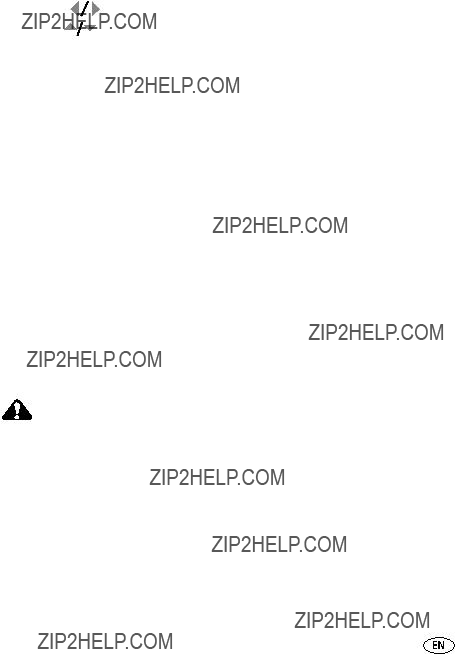
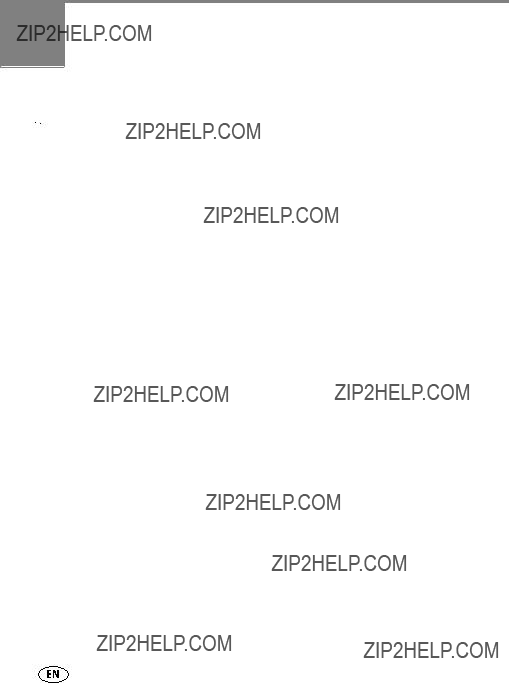
5 Transferring, printing, tagging
 CAUTION:
CAUTION:
Before connecting any cables, install the software that was included with your camera. Failure to do so may cause the software to load incorrectly.
Installing the software
1Close all open software applications before starting the installation.
NOTE: If running WINDOWS OS and installing EASYSHARE Software from the Kodak Web site, do not close the WinZip application. If prompted, allow EASYSHARE Software to access the Internet.
2 Place the KODAK EASYSHARE Software CD into the
3 Load the software:
WINDOWS
MAC OS
4 Follow the
NOTE: When prompted, register your camera and software. Registering lets you sign up for information that keeps your system
5 If prompted, restart the computer.
For software help, click the Help button in EASYSHARE Software.
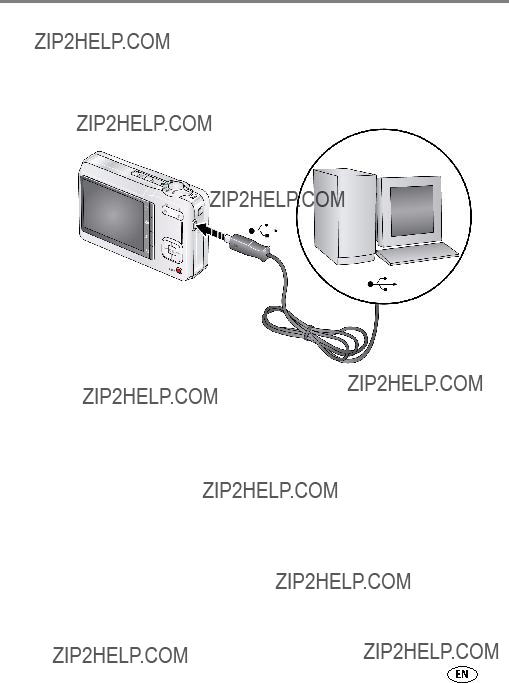
Transferring, printing, tagging
Transferring pictures/videos
Using the USB cable
Connect a KODAK USB Cable, Model
Then turn on the camera.
Using other options
You can also use a KODAK Card Reader to transfer your pictures/videos.
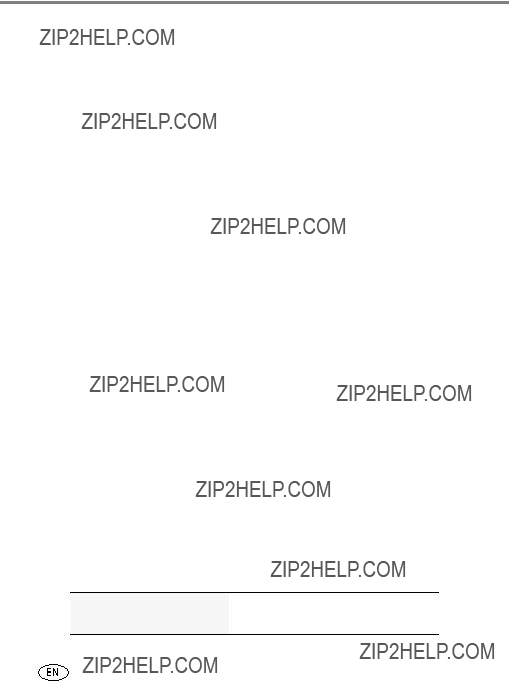
Transferring, printing, tagging
Printing pictures
Direct printing with a KODAK
Your camera is compatible with PICTBRIDGE Technology, so you can print directly to PICTBRIDGE enabled Printers. You need a camera with fully charged batteries, a PICTBRIDGE enabled Printer, and a USB cable.
Connecting the camera to a KODAK
1 Turn off the camera and printer.
2 Connect the appropriate USB cable from the camera to the printer.
Printing from a KODAK
1Turn on the printer. Turn on the camera.
The PictBridge logo is displayed, followed by the current picture and menu. (If no pictures are found, a message is displayed.) If the menu turns off, press any button to redisplay it.
2Highlight a printing option, then press OK.
Current  to choose a picture. Choose the number of copies.
to choose a picture. Choose the number of copies.
Tagged
Index
All
Image
NOTE: During direct printing, pictures are not permanently transferred or saved to the printer. To transfer pictures to your computer, see page 29.
Purchase accessories www.kodak.com/go/c180accessories
www.kodak.com/go/c160accessories
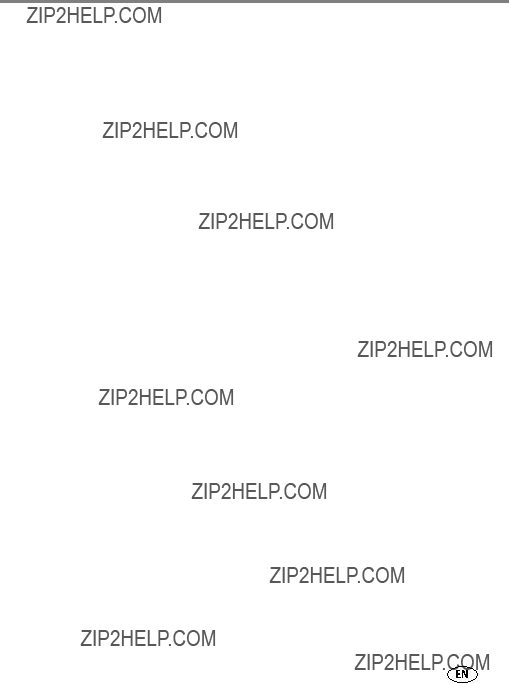
Transferring, printing, tagging
Disconnecting the camera from a KODAK
1 Turn off the camera and printer.
2 Disconnect the USB cable from the camera and the printer.
Using a printer that is not PICTBRIDGE enabled
After you transfer pictures from the camera to your computer, you can print them from EASYSHARE Software. For details, see Help in EASYSHARE Software.
Ordering prints online
KODAK Gallery (www.kodakgallery.com) is one of the many online print services offered in EASYSHARE Software. You can easily:
???Upload your pictures.
???Edit, enhance, and add borders to your pictures.
???Store pictures, and share them with family and friends.
???Have prints, photo greeting cards, frames, and albums delivered to your door.
Printing from an optional SD or SDHC Card
???Automatically print tagged pictures when you insert your card into a printer with an SD/SDHC Card slot. See your printer user???s guide for details.
???Make prints at an SD/SDHC
???Take the card to your local photo retailer for professional printing.

Transferring, printing, tagging
Tagging your pictures
You can tag your pictures so they are easy to:
???Organize with a favorite tag
???Organize with a tag name that you create
Tagging pictures for printing
4Optional: You can apply a print quantity to other pictures. Press  for
for
previous/next. Keep the print quantity as is, or press  to change it. Repeat this step until the desired print quantity is applied to the pictures.
to change it. Repeat this step until the desired print quantity is applied to the pictures.
5Press OK.
The Print icon appears in the status area.
???Press the Shutter button halfway down to return to Capture mode.
IMPORTANT: Your camera offers a
Printing tagged pictures
When you transfer the tagged pictures to your computer, the EASYSHARE Software print screen opens. For details on printing, see Help in EASYSHARE Software.
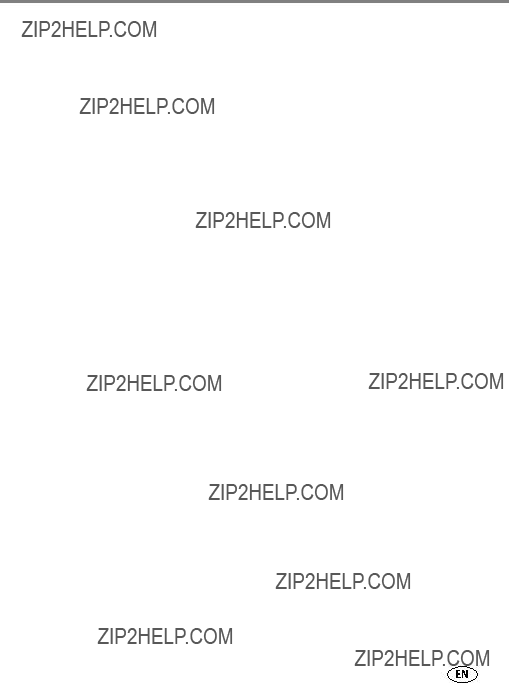
Transferring, printing, tagging
Tagging pictures/videos for emailing
First, create a new email address: highlight Add Email, press OK, then use the
1 Press the Review  button. Press
button. Press  to locate a picture, then press OK.
to locate a picture, then press OK.
2 Press  to highlight Email, then press OK.
to highlight Email, then press OK.
3 Press  to locate an email address, then press OK.
to locate an email address, then press OK.
4To tag other pictures/videos with the same address, scroll through them. When the picture you want is displayed, press OK.
5To send the pictures/videos to more than one address, repeat step 3.
???To remove a selection, highlight a checked address and press OK. To remove all email selections, highlight Clear All, then press OK.
???Press the Shutter button halfway down to return to Capture mode.
The Email icon appears in the status area.
When you transfer the tagged pictures/videos to your computer, EASYSHARE Software prompts you to send the pictures/videos. For details, see Help in EASYSHARE Software.
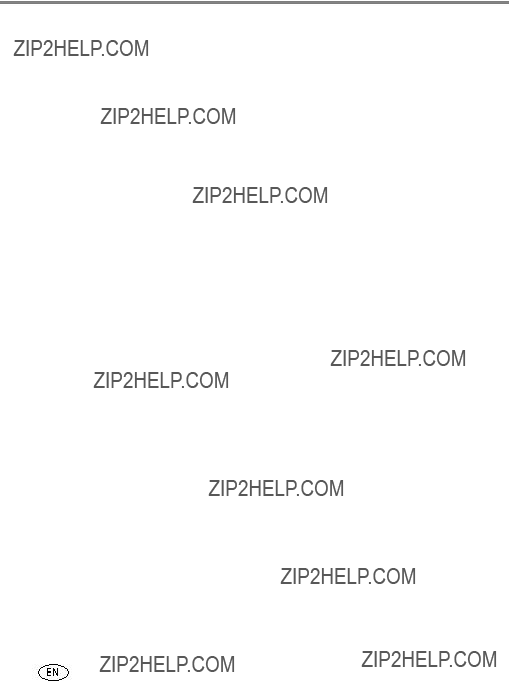
Transferring, printing, tagging
Assigning the favorite tag to pictures/videos
To make your favorite pictures/videos easier to locate in EASYSHARE Software, you can assign the favorite tag.
1 Press the Review  button, then locate a picture/video.
button, then locate a picture/video.
2Press the Share button.
The favorite tag appears with the picture. When you transfer the tagged pictures/videos to your computer, EASYSHARE Software opens and categorizes your pictures/videos with a
Assigning other tags to pictures/videos
First, create a new tag name: highlight New Tag, press OK, then use the
1 Press the Review  button, then locate a picture/video.
button, then locate a picture/video.
2 Press the Menu  button.
button.
3 Highlight Tag, then press OK.
4 Highlight a tag name, then press OK.
5To assign the tag to other pictures, press  to locate a picture, then press OK.
to locate a picture, then press OK.
The tag name appears with the picture. A plus (+) means the picture has more than one tag assigned.
To remove a selection, highlight a tag name and press OK. To remove all tag selections, highlight Clear All, then press OK.
When you transfer the tagged pictures/videos to your computer, EASYSHARE Software opens and categorizes your pictures/videos with the appropriate tag.
IMPORTANT: Your camera offers a
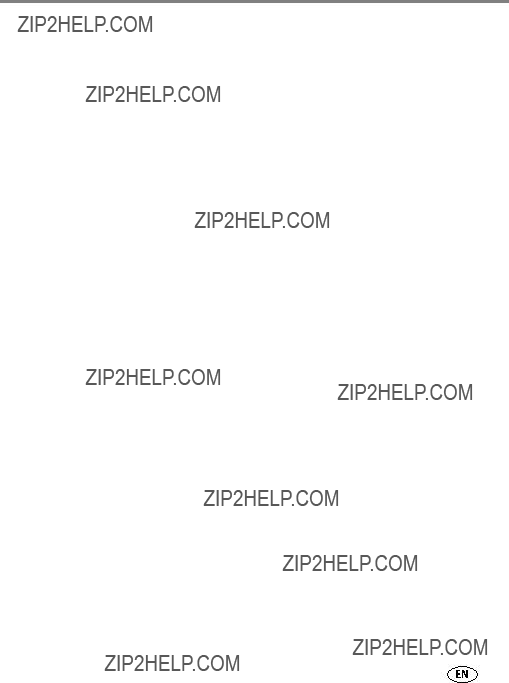
Transferring, printing, tagging
Assigning a tag to pictures/videos you take next
Use the Set Tag feature to assign a tag name to the next pictures/videos you take. First, create a new tag name: highlight New Tag, press OK, then use the
1 Press the Menu  button.
button.
2 Highlight the Setup tab.
3 Highlight Set Tag, then press OK.
4Highlight a tag name, then press OK.
The selected tag is displayed on the LCD. The tag is applied to new pictures/videos.
???Press the Shutter button halfway down to return to Capture mode.
When you transfer the tagged pictures/videos to your computer, EASYSHARE Software opens and categorizes your pictures/videos with the appropriate tag.
IMPORTANT: Your camera offers a
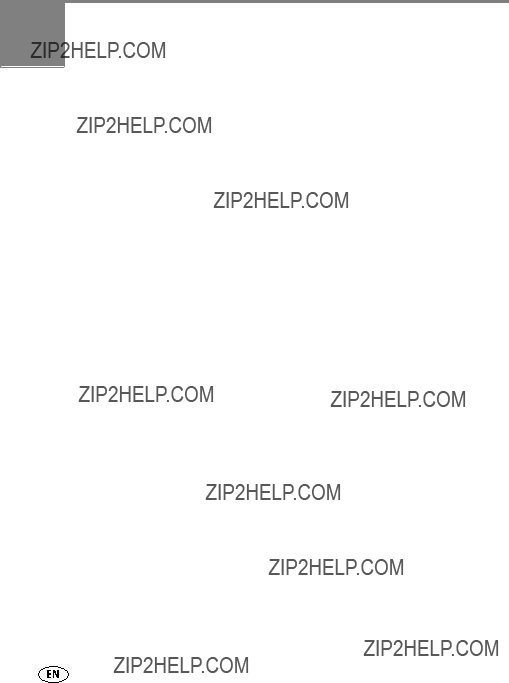
6 Troubleshooting
IMPORTANT: Your camera offers a
Camera problems
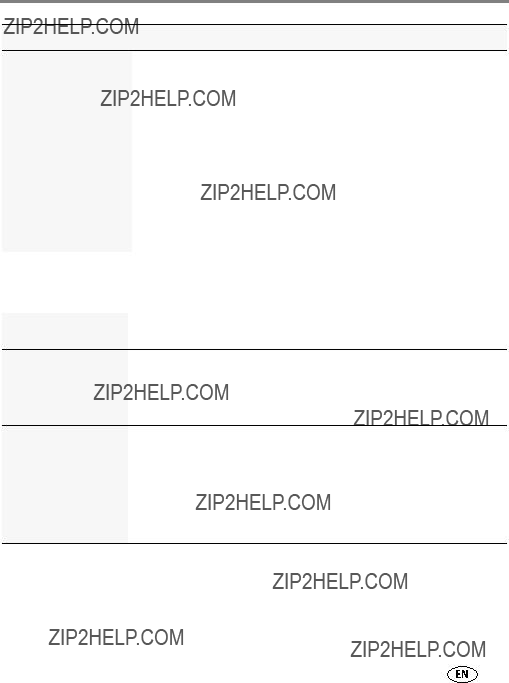
Troubleshooting
StatusSolution
You cannot take a picture
Slide Show does not run on an external video device
???Adjust the camera Video Out setting to NTSC or PAL (see page 27).
???Make sure the external device settings are correct. (See the device???s user???s guide).
Computer does not communicate with the camera
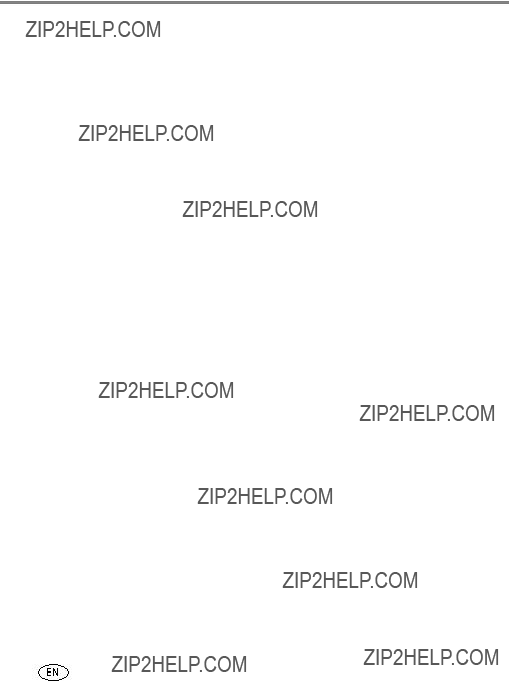
Troubleshooting
Picture quality problems
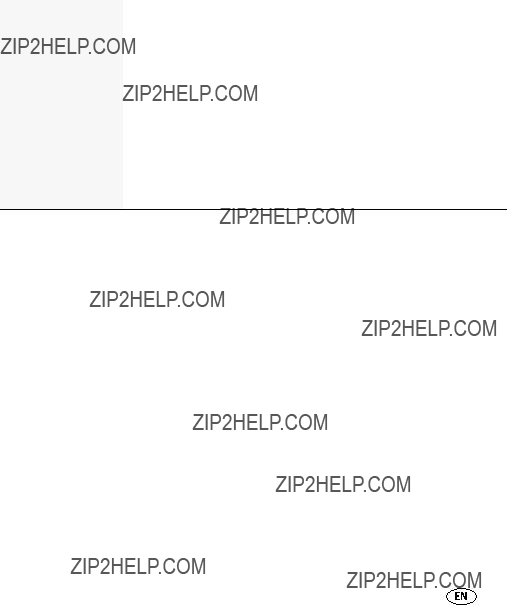
message
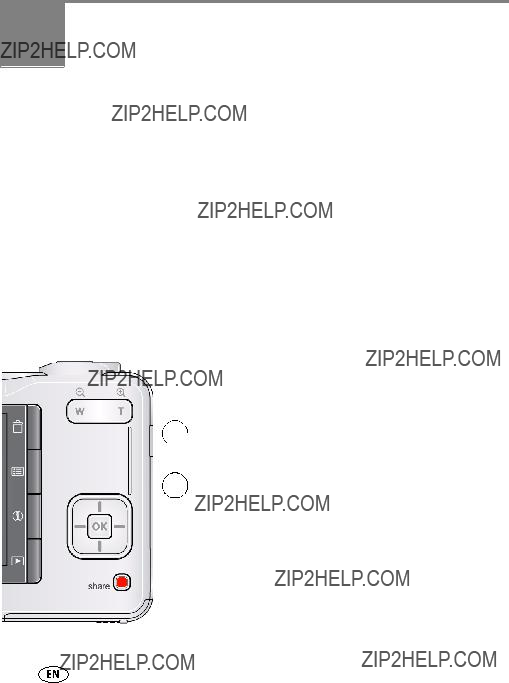
7 Getting help
Getting help from your camera
You want the most from your camera. You want to understand:
???What it can do for you
???And how to take the best possible pictures and videos
Great news!
Your camera offers a
Turning on camera Help
1 Press the Menu button 
 then highlight a menu choice.
then highlight a menu choice.
2Press the Info  button.
button.
 Scroll through a Help topic
Scroll through a Help topic

Other
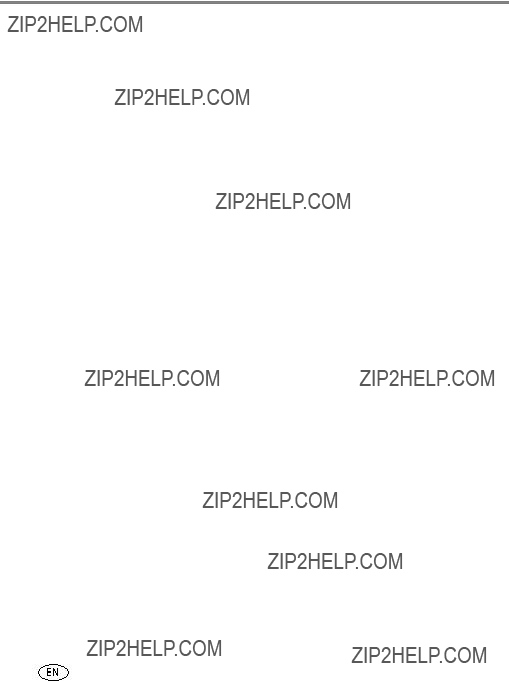
Getting help
Getting help on the telephone
NOTE: If you have questions concerning this product, you may speak with Kodak customer support.
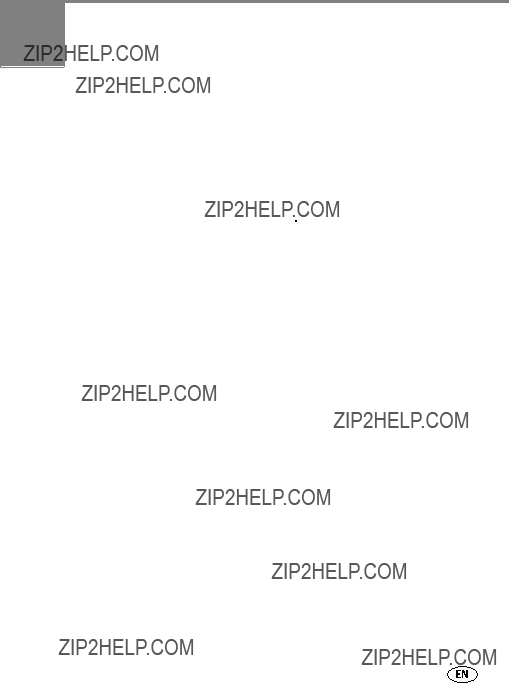
8 Appendix
Camera specifications
Effective
Image 
 (The SD logo is a trademark of the SD Card Association.) Maximum supported card size: 32 GB
(The SD logo is a trademark of the SD Card Association.) Maximum supported card size: 32 GB
Internal storage
Taking
C160: 3X optical zoom;
Lens
Digital
Focus
60 cm (23.6
60 cm (23.6
C180:
10 m (32.8
Auto focus
Face
Shutter
ISO

Appendix
Manual: C180: 80, 100, 200, 400, 800, 1250; C160: 80, 100, 200, 400, 800, 1000
Exposure
Exposure
White
Electronic
C180 @ ISO 240 in Auto mode:
C160 @ ISO 200 in Auto mode:
Burst
Capture
Image file format???
Still: EXIF 2.21 (JPEG compression); file organization DCF
Video: QuickTime (CODEC Motion JPEG; audio: PCM)
Picture size???
Color
Sharpness
44  www.kodak.com/go/support
www.kodak.com/go/support
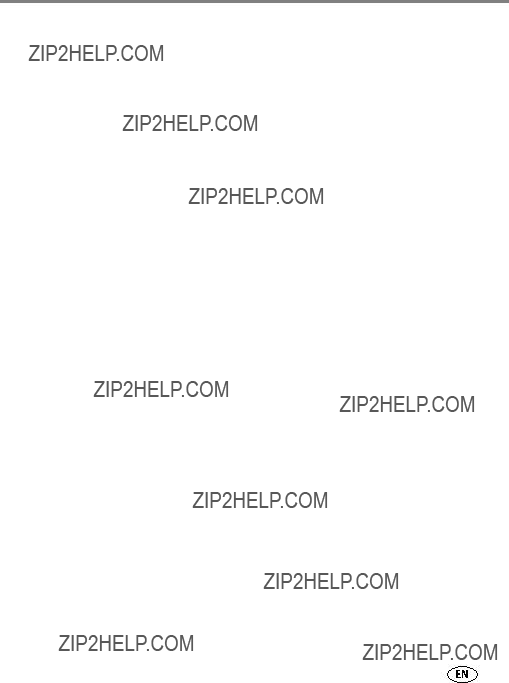
Appendix
Video
VGA (640 x 480 @ 30 fps)
QVGA (320 x 240 @ 30 fps)
Video blur
Communication with
Video
PICTBRIDGE
Tripod
Operating
Care and maintenance
???If you suspect water has gotten inside the camera, remove the batteries and card. Allow all components to
???Blow gently on the lens or LCD to remove dust and dirt. Wipe gently with a soft,
???Service agreements may be available in your country. Contact a dealer of KODAK Products for more information.
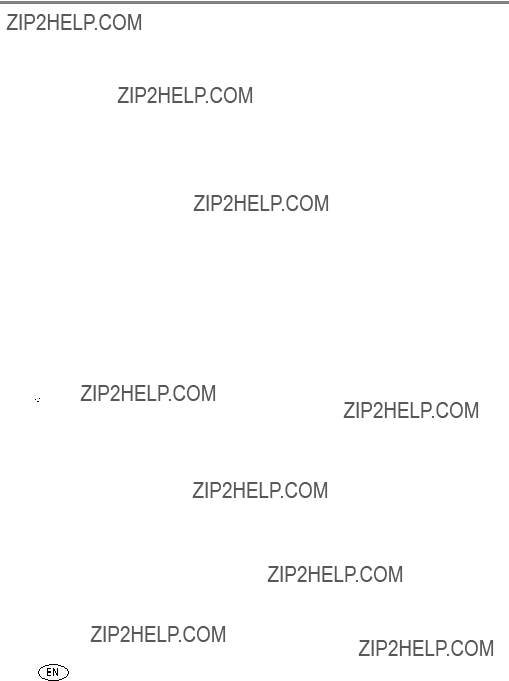
Appendix
???For digital camera disposal or recycling information, contact your local authorities. In the US, visit the Electronics Industry Alliance at www.eiae.org or www.kodak.com/go/c180support, www.kodak.com/go/c160support.
Upgrading your software and firmware
Download the latest versions of the software included on the KODAK EASYSHARE Software CD and the camera firmware (the software that runs on the camera). Visit www.kodak.com/go/c180downloads, www.kodak.com/go/c160downloads.
Storage capacities
The LCD displays the approximate number of pictures (or minutes/seconds of video) remaining. For average SD Card capacities, visit www.kodak.com/go/SDcapacities. Actual storage capacity varies depending on subject composition, card size, and other factors. You may be able to store more or fewer pictures and videos. Favorites take up additional space in internal memory.
Important safety instructions
 CAUTION:
CAUTION:
Do not disassemble this product; there are no
???The use of an accessory that is not recommended by Kodak may cause fire, electric shock, or injury. For approved accessories, visit www.kodak/go/accessories.
???Use only a
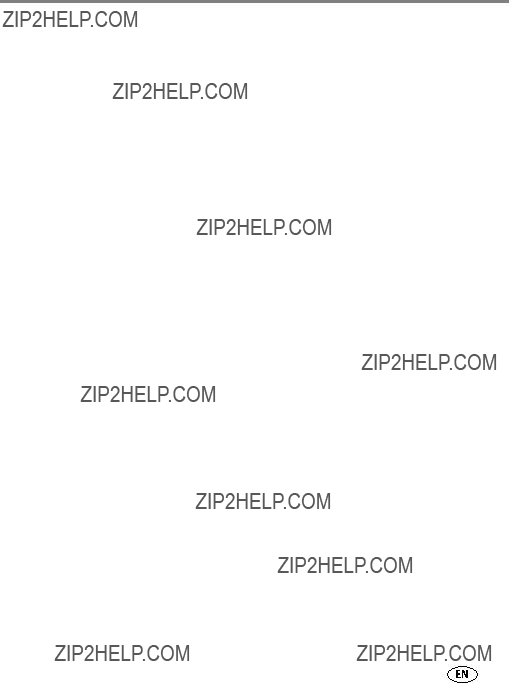
Appendix
???If using this product in an airplane, observe all instructions of the airline.
???When removing the batteries, allow them to cool; they may be hot.
???Follow all warnings and instructions supplied by the battery manufacturer.
???Use only batteries approved for this product to avoid risk of explosion.
???Keep batteries out of the reach of children.
???Do not allow batteries to touch metal objects, including coins. Otherwise, a battery may short circuit, discharge energy, become hot, or leak.
???Do not disassemble, install backward, or expose batteries to liquid, moisture, fire, or extreme temperature.
???Remove the batteries when the product is stored for an extended period of time. In the unlikely event that battery fluid leaks inside the product, contact Kodak customer support.
???In the unlikely event that battery fluid leaks onto your skin, wash immediately with water and contact your local health provider. For additional
???Dispose of batteries according to local and national regulations. Visit www.kodak.com/go/kes.
???Do not charge
???For more information on batteries, visit www.kodak.com/go/batterytypes.
Battery replacement, battery life
???KODAK
???KODAK MAX Alkaline Battery, AA: >200 pictures
???KODAK
???KODAK
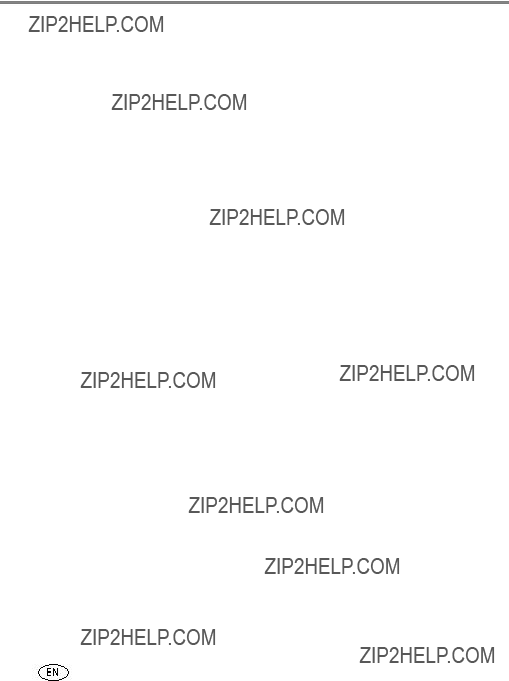
Appendix
Battery life per CIPA testing method. (Approx. number of pictures in Auto mode, using 128 MB SD Card.) Actual life may vary based on usage.
Extending battery life
???Use
???Dirt on the battery contacts can affect battery life. Wipe the contacts with a clean, dry cloth before loading the batteries in the camera.
???Battery performance is reduced at temperatures below 41?? F (5?? C). When using your camera in cold weather, carry spare batteries and keep them warm. Do not discard cold batteries that do not work; when they return to room temperature, they may be usable.
Limited warranty
Kodak warrants KODAK Consumer Electronic Products and Accessories (???Products???), excluding batteries, to be free from malfunctions and defects in both materials and workmanship for one year from the date of purchase. Retain the original dated sales receipt. Proof of the date of purchase will be required with any request for warranty repair.
Limited warranty coverage
Warranty service is only available from within the country where the Products were originally purchased. You may be required to ship Products, at your expense, to the authorized service facility for the country where the Products were purchased. Kodak will repair or replace Products if they fail to function properly during the warranty period, subject to any conditions and/or limitations stated herein. Warranty service will include all labor as well as any necessary adjustments and/or replacement parts. If Kodak is unable to repair or replace a Product, Kodak will, at its option, refund the purchase price paid for the Product provided the Product has been returned to Kodak along with proof of the purchase price paid. Repair, replacement, or refund of the purchase price are the sole remedies under the warranty. If replacement parts are used in making repairs, those parts may be remanufactured, or may contain remanufactured materials. If it is necessary to replace the entire Product, it may be
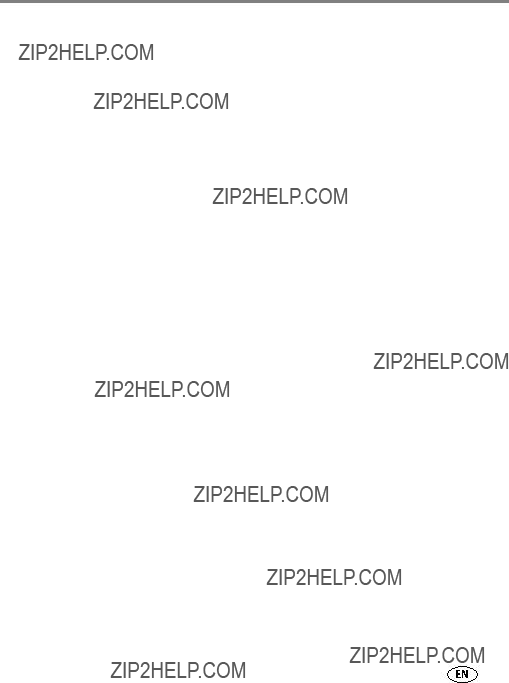
Appendix
replaced with a remanufactured Product. Remanufactured Products, parts and materials are warranted for the remaining warranty term of the original Product, or 90 days after the date of repair or replacement, whichever is longer.
Limitations
This warranty does not cover circumstances beyond Kodak's control. This warranty does not apply when failure is due to shipping damage, accident, alteration, modification, unauthorized service, misuse, abuse, use with incompatible accessories or attachments (such as third party ink or ink tanks), failure to follow Kodak's operation, maintenance or repacking instructions, failure to use items supplied by Kodak (such as adapters and cables), or claims made after the duration of this warranty.
Kodak makes no other express or implied warranty for this product, and disclaims the implied warranties of merchantability and fitness for a particular purpose. In the event that the exclusion of any implied warranty is ineffective under the law, the duration of the implied warranty will be one year from the purchase date or such longer period as required by law. The option of repair, replacement, or refund is Kodak's only obligation. Kodak will not be responsible for any special, consequential or incidental damages resulting from the sale, purchase, or use of this product regardless of the cause. Liability for any special, consequential or incidental damages (including but not limited to loss of revenue or profit, downtime costs, loss of the use of the equipment, cost of substitute equipment, facilities or services, or claims of your customers for such damages resulting from the purchase use or failure of the Product), regardless of cause or for breach of any written or implied warranty is expressly disclaimed.
Your rights
Some states or jurisdictions do not allow exclusion or limitation of incidental or consequential damages, so the above limitation or exclusion may not apply to you. Some states or jurisdictions do not allow limitations on how long an implied warranty lasts, so the above limitation may not apply to you. This warranty gives you specific rights, and you may have other rights which vary from state to state or by jurisdiction.
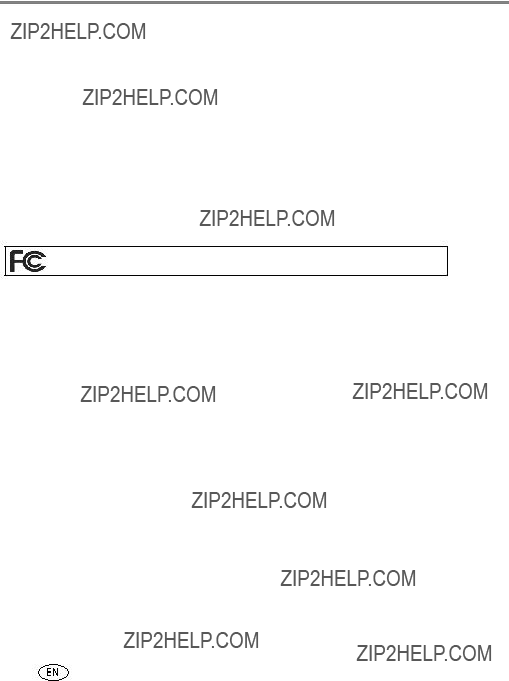
Appendix
Outside the United States and Canada
In countries other than the United States and Canada, the terms and conditions of this warranty may be different. Unless a specific Kodak warranty is communicated to the purchaser in writing by a Kodak company, no warranty or liability exists beyond any minimum requirements imposed by law, even though defect, damage, or loss may be by negligence or other act.
Regulatory compliance
FCC compliance and advisory
KODAK EASYSHARE C160/C180 Digital Camera
This equipment has been tested and found to comply with the limits for a Class B digital device, pursuant to Part 15 of the FCC Rules. These limits are designed to provide reasonable protection against harmful interference in a residential installation. This equipment generates, uses, and can radiate radio frequency energy and, if not installed or used in accordance with the instructions, may cause harmful interference to radio communications. However, there is no guarantee that interference will not occur in a particular installation. If this equipment does cause harmful interference to radio or television reception, which can be determined by turning the equipment off and on, the user is encouraged to try to correct the interference by one or more of the following measures: 1) reorient or relocate the receiving antenna; 2) increase the separation between the equipment and the receiver; 3) connect the equipment to an outlet on a circuit different from that to which the receiver is connected; 4) consult the dealer or an experienced radio/TV technician for additional suggestions. Any changes or modifications not expressly approved by the party responsible for compliance could void the user???s authority to operate the equipment. Where shielded interface cables have been provided with the product or specified additional components or accessories elsewhere defined to be used with the installation of the product, they must be used in order to ensure compliance with FCC regulation.
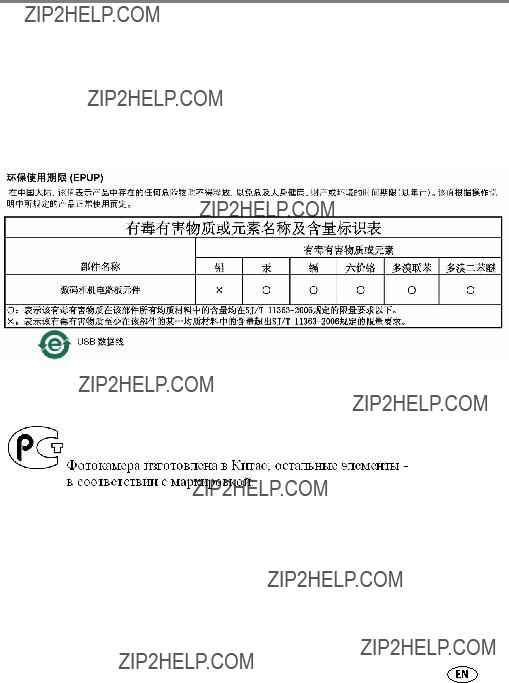
Appendix
Use of this product in any manner that complies with the
China RoHS
Russian
Eastman Kodak Company
Rochester, NY 14650
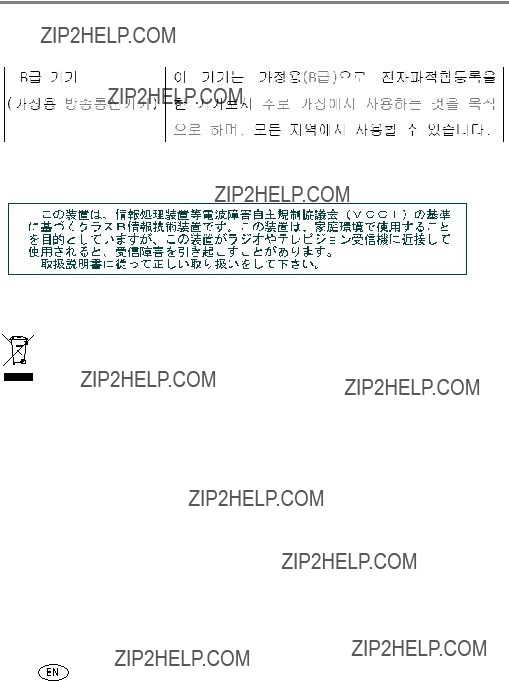
Appendix
Korean Class B ITE
VCCI Class B ITE
Waste Electrical and Electronic Equipment labeling
Australian
 N137
N137
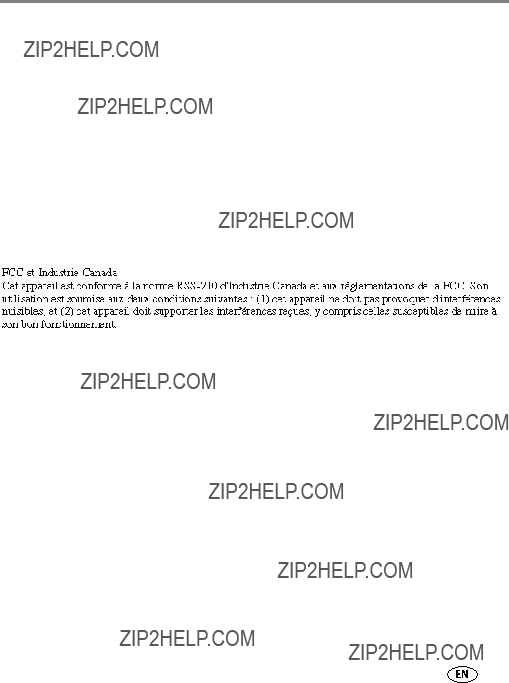
Appendix
Canadian DOC statement
DOC Class B
Observation des
FCC and Industry Canada
This device complies with Industry Canada
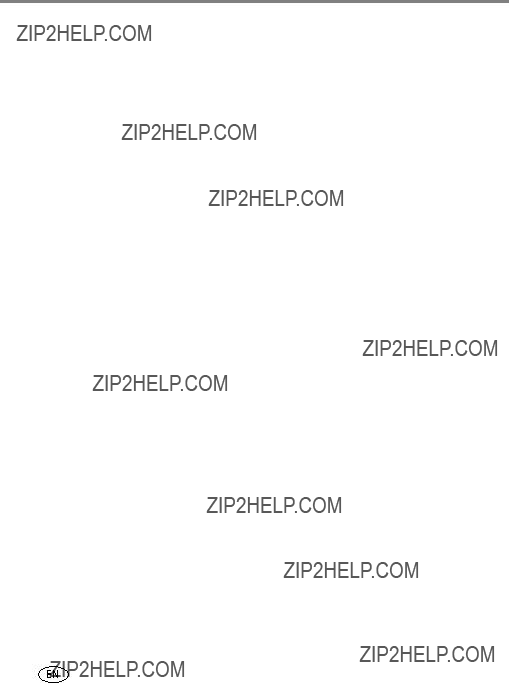
Index
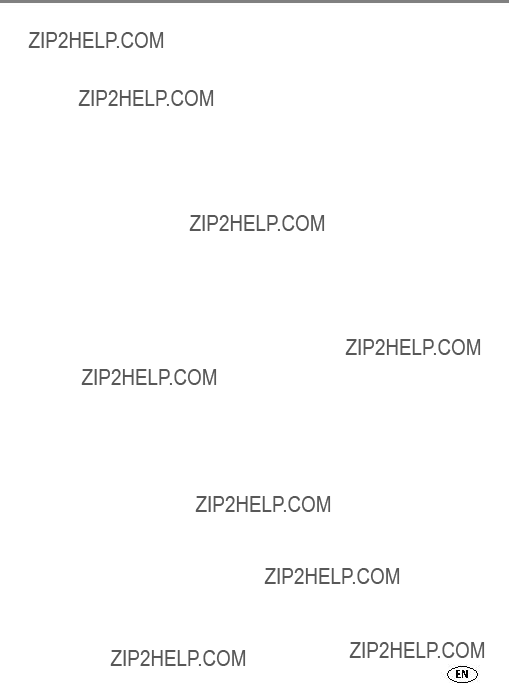
Index
digital zoom, 5 displaying slide show, 15 disposal, recycling, 46 downloading pictures, 28
E
EasyShare software, 28 edit videos, 19
emailing pictures, videos, 33 expected battery life, 47 exposure
long time, 23, 25, 26 metering, 24
exposure compensation, 22 exposure metering, 24 external video device
F
favorites tagging, 34 FCC compliance, 50 fireworks, 8
firmware, upgrading, 46 flash button, i
focus framing marks, 4 focus mode, 23
focus mode (video), 25 format, 27
G
www.kodak.com/go/support
H help
I
icons, modes, 7 image storage, 26 installing
battery, 1 SD/SDHC Card, 3 software, 28
K
Kodak EasyShare software installing, 28 upgrading, 46
Kodak Perfect Touch technology, 17 Kodak Web sites, 40
L
brightness, 26 reviewing pictures, 12 reviewing videos, 12
LCD brightness, 26 lens
cleaning lens, 45 light,
55
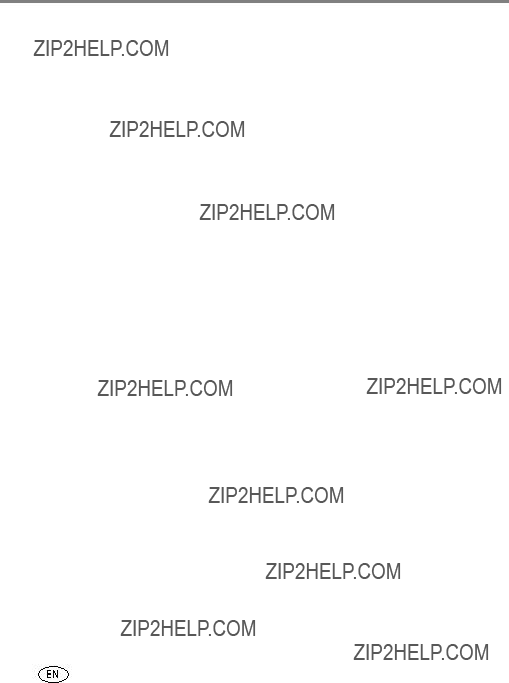
Index
long time exposure, 23, 25, 26
M
memory
inserting card, 3 menu button, ii menu settings, 22 microphone, i mode dial, i modes, 7
backlight, 8 beach, 8 children, 8 fireworks, 8 flower, 8 high ISO, 8
manner/museum, 8 night landscape, 8 night portrait, 8 scene (SCN), 8
multiple selections, 14
N
56
O
P
Perfect Touch technology, 17 PictBridge enabled printer, 30 picture size, 22
pictures copying, 18 cropping, 17
emailing tagged, 33 Kodak Perfect Touch, 17 printing, 31
printing tagged, 32 protecting, 13 review icons, 21 reviewing, 12 tagging, 32 taking, modes, 7
transfer via USB cable, 28 pictures/video
deleting, 13 playing a video, 12 power
camera, 2
from a card, 31 from computer, 31 optimizing printer, 40 order online, 31 PictBridge, 30
www.kodak.com/go/support
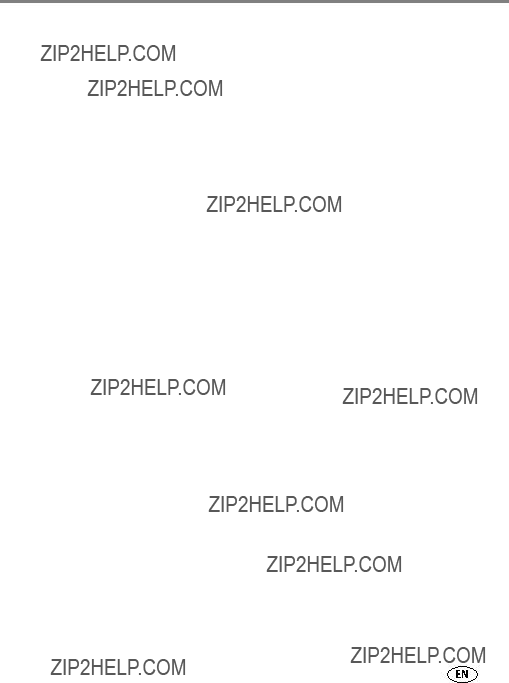
Index
tagged pictures, 31 protecting pictures, videos, 13
Q
R
recycling, disposal, 46 regulatory information, 50 repair, 41
reset camera, 27 review button, ii reviewing pictures/video
as you take them, 5 deleting, 13
LCD, 12 protecting, 13 slide show, 15
S
scene modes (SCN), 8 SD/SDHC Card
inserting, 3 printing from, 31
select multiple pictures/videos, 14
service and support telephone numbers, 42
set tag, 26 setting
www.kodak.com/go/support
auto power off, 27
exposure metering, 24 image storage, 26 ISO, 25
long time exposure, 23, 25, 26 picture size, 22
video out, 27 video size, 25 white balance, 24
setting up the camera, 1 setup menu, 26
Share button, 26 share button, ii sharpness, 25 shutter
problems, 37
slide show running, 15
snow, 8 software
57
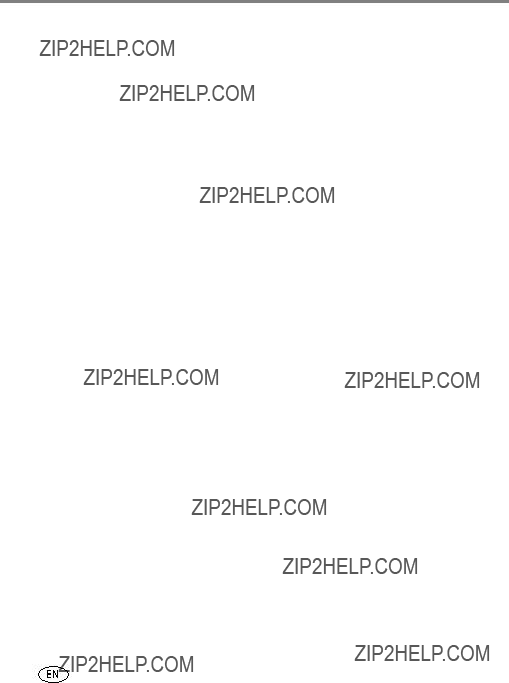
Index
specifications, camera, 43 strap, 1
strap post, ii support, technical, 42
T tagging
creating tags, 34 favorites, 34
for email, 33 for print, 32
taking pictures, videos, 4 telephone support, 42 television, slide show, 15 text, 8
U
upgrading software, firmware, 46 URLs, Kodak Web sites, 40
USB
V
VCCI compliance, 52 video
58
playback, 12 protecting, 13 review icons, 21 size, 25
transfer to computer, 28 viewing, 12
video out, 27 video size, 25 viewing
Windows OS, installing software, 28
Z zoom
www.kodak.com/go/support